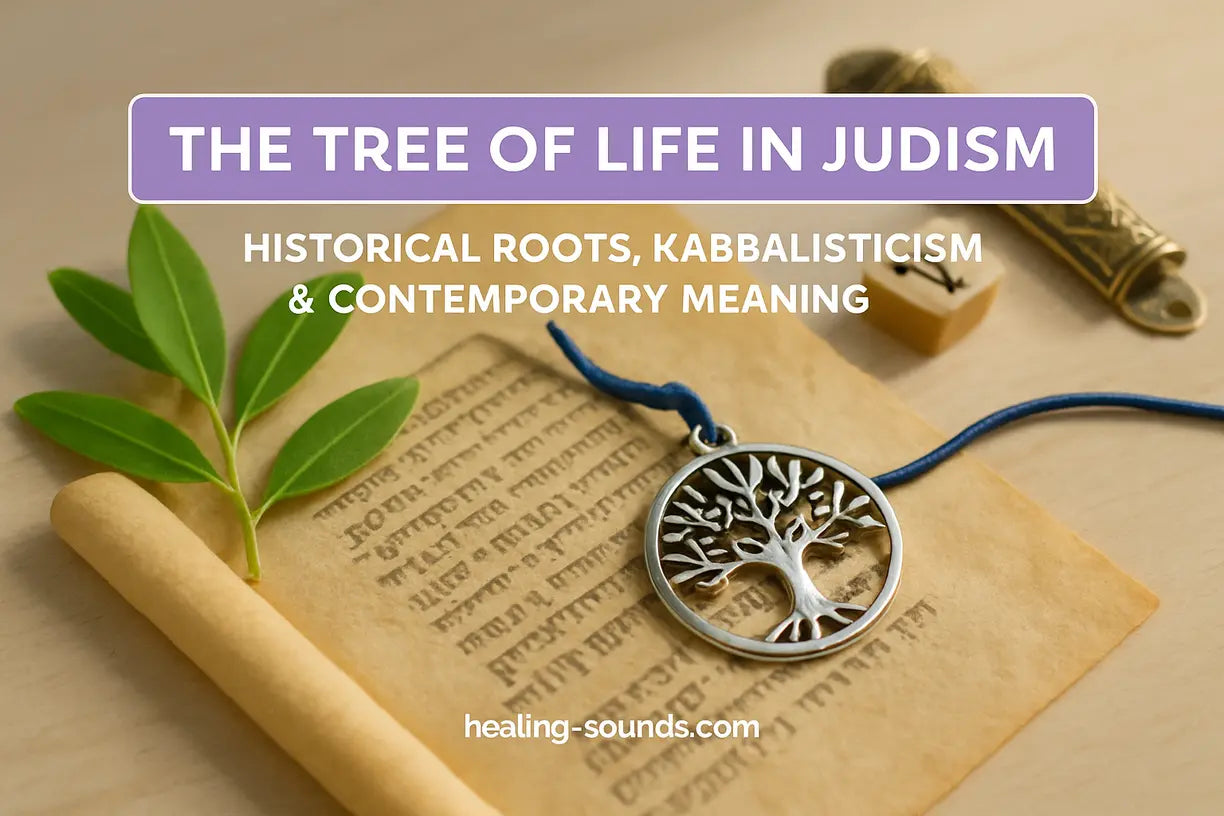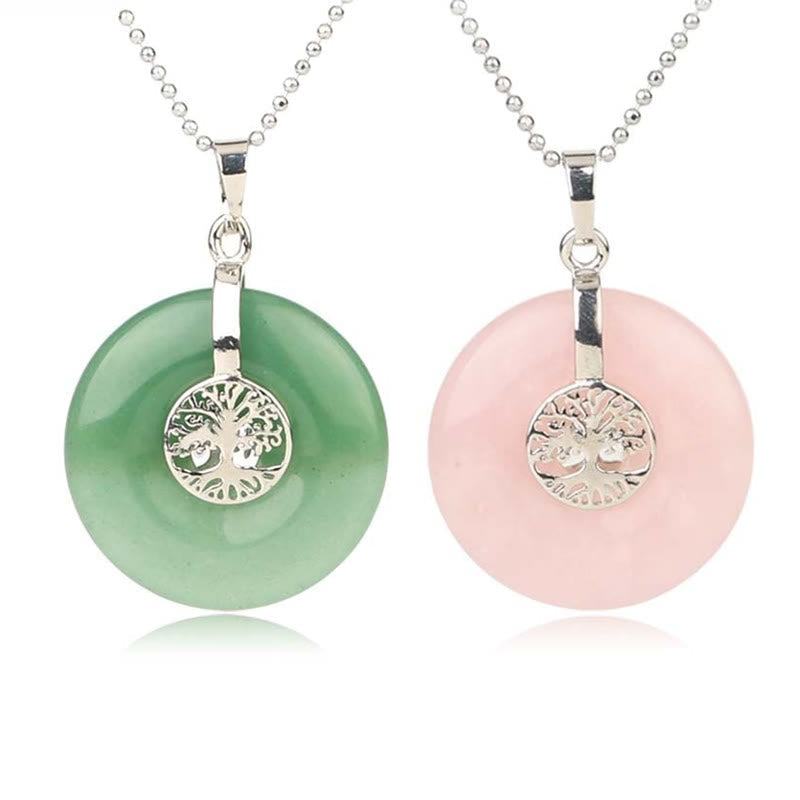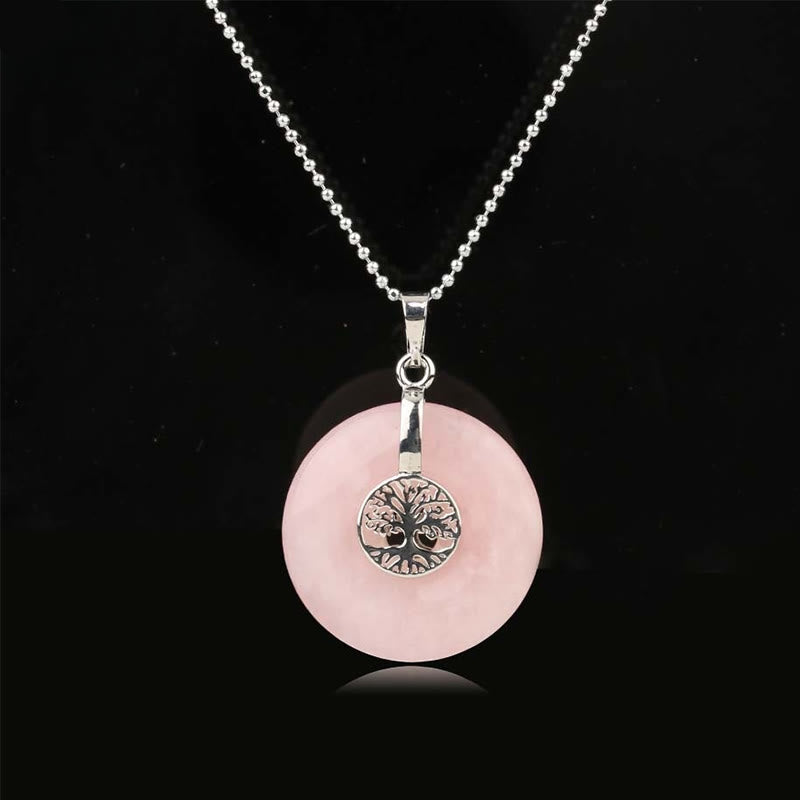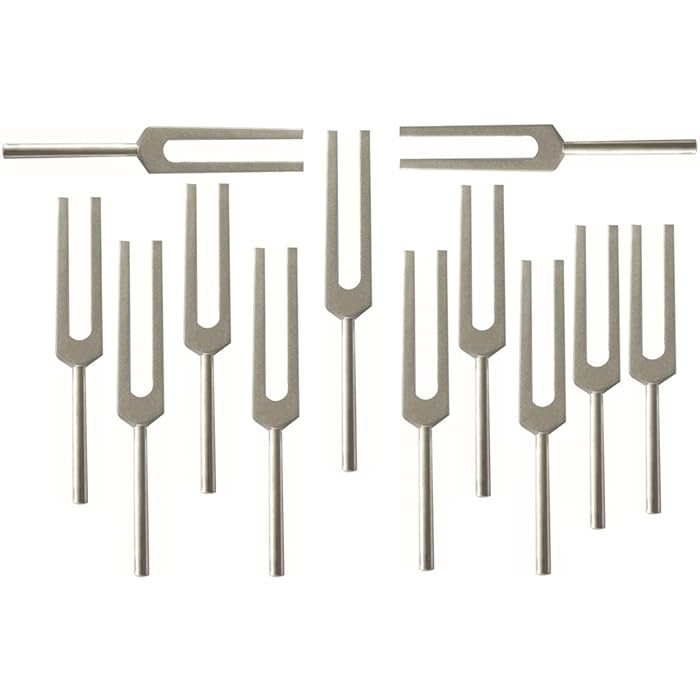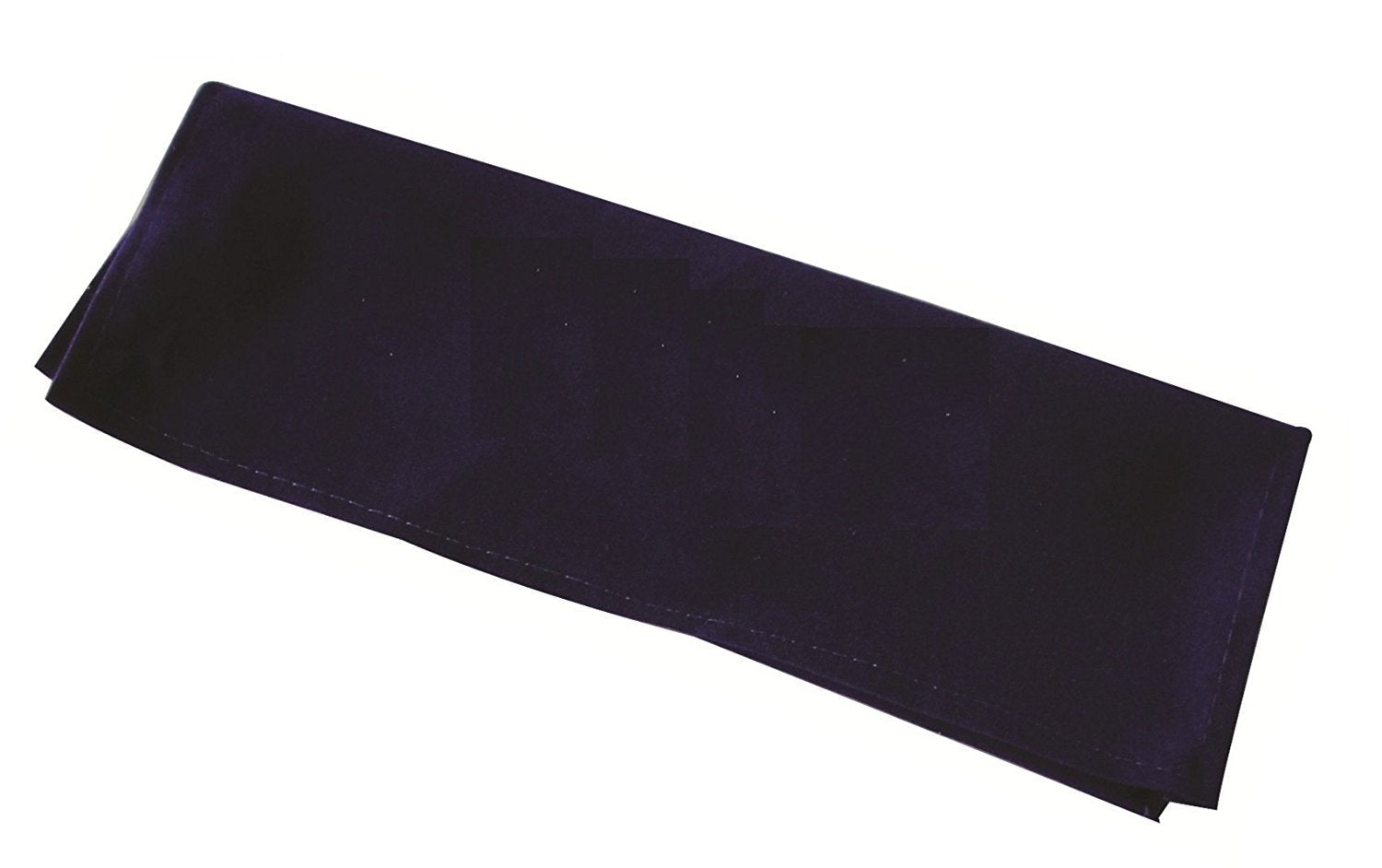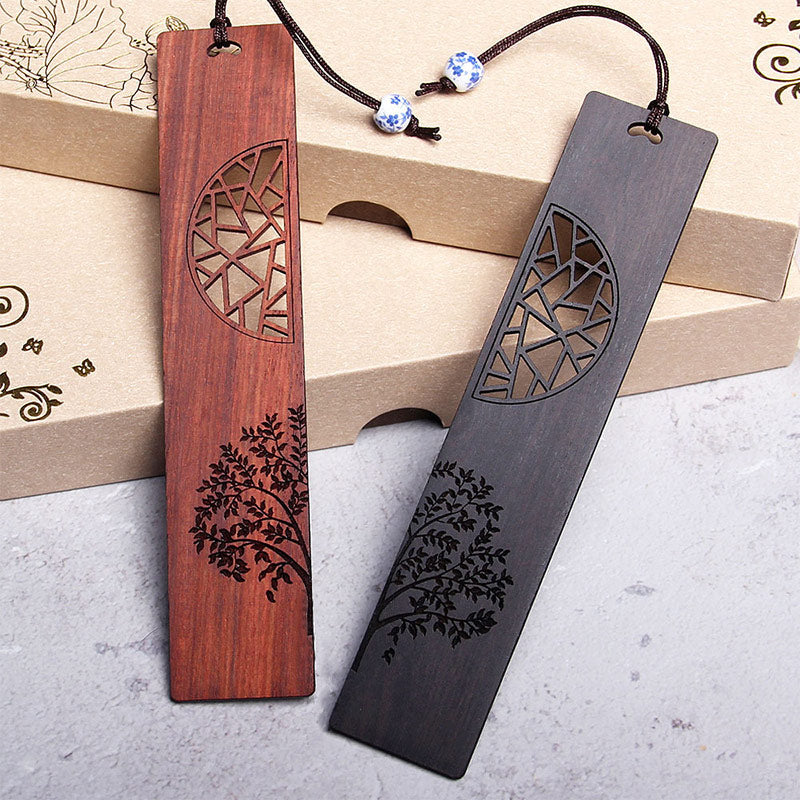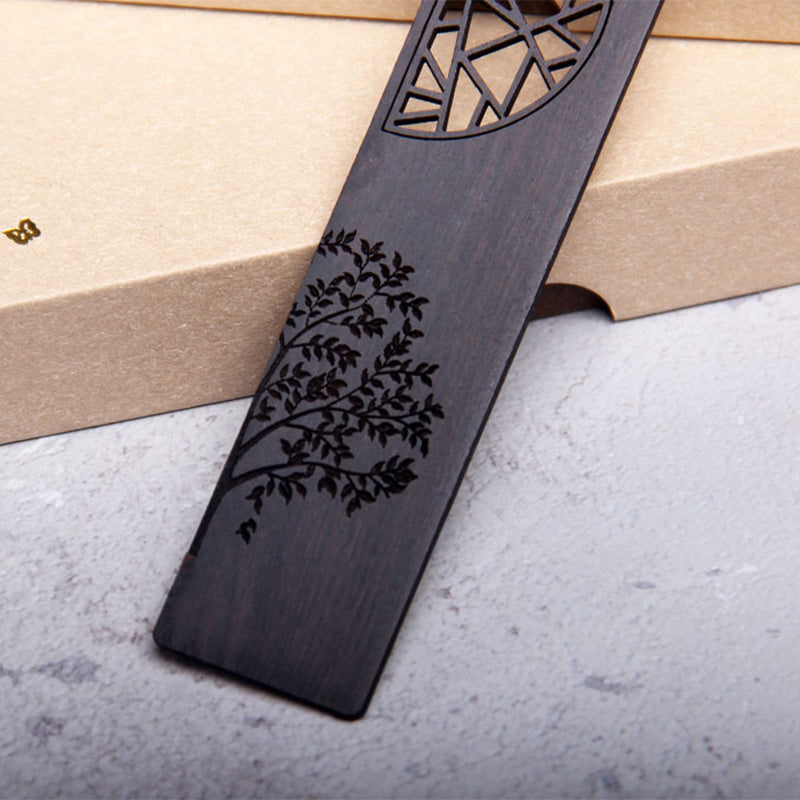Von den alten Seiten der Thora bis zu den mystischen Diagrammen der Kabbala – nur wenige Symbole haben in der jüdischen Tradition einen so tiefen Stellenwert wie der Baum des Lebens. Auf Hebräisch Etz Chaim genannt, ist er mehr als nur eine biblische Referenz; er ist eine tiefgründige Karte der Schöpfung, ein Leitfaden für spirituelles Wachstum und ein zeitloses Symbol der Verbindung zum Göttlichen. Für jeden, der sich zur jüdischen Mystik hingezogen fühlt oder die tieferen Schichten ihrer Symbolik verstehen möchte, bietet die Erforschung des Lebensbaums im Judentum eine bereichernde und lohnende Reise.
Dieser Artikel befasst sich mit den heiligen Traditionen und Interpretationen des Lebensbaums. Wir verfolgen seine Ursprünge im Garten Eden, enthüllen seine komplexe Bedeutung in den esoterischen Lehren der Kabbala und erforschen, wie seine Symbolik auch heute noch spirituell Suchende inspiriert und leitet. Ob Sie Ihren Glauben vertiefen oder neu neugierig auf jüdische Weisheit sind – das Verständnis des Etz Chaim ist der Schlüssel zur Erschließung eines kraftvollen spirituellen Erbes.
Die Wurzeln des Baums des Lebens in der Thora
Der Baum des Lebens wird erstmals im Buch Genesis erwähnt. Gott platzierte ihn in der Mitte des Garten Eden neben dem Baum der Erkenntnis von Gut und Böse und war die Quelle des ewigen Lebens. Nachdem Adam und Eva aus dem Garten Eden vertrieben worden waren, wurde ihnen der Zugang zu diesem Baum verwehrt. Dies symbolisierte die Trennung zwischen der Menschheit und einem Zustand reiner, unendlicher Verbindung zu Gott.
Doch das Konzept von Etz Chaim endete hier nicht. In der jüdischen Tradition wird die Tora selbst oft als „Baum des Lebens“ bezeichnet. Im Buch der Sprichwörter (3:18) heißt es: „Sie ist ein Baum des Lebens für diejenigen, die sie ergreifen.“ Diese kraftvolle Metapher beschreibt den Weg zur spirituellen Nahrung neu. Während der physische Baum im Garten Eden unzugänglich wurde, wurde die in der Tora enthaltene Weisheit zur neuen Quelle spiritueller Langlebigkeit und der Verbindung mit Gottes Willen. Dieser Glaube unterstreicht einen zentralen jüdischen Wert: Wahres Leben findet man im Studium, in der Weisheit und im Befolgen der göttlichen Gebote .

Etz Chaim: Der kabbalistische Baum des Lebens
Während die Thora die Grundlage bildet, entfaltet sich der Lebensbaum erst in der Kabbala, der jüdischen Mystik, in seiner komplexesten und tiefgründigsten Form. Hier ist der Etz Chaim kein physischer Baum, sondern ein Diagramm – eine heilige Karte, die die Architektur des göttlichen Universums und der menschlichen Seele veranschaulicht. Dieser kabbalaische Lebensbaum ist eine zentrale Lehre für das Verständnis von Gottes Beziehung zur Welt.
Die Sefirot verstehen
Der kabbalistische Lebensbaum besteht aus zehn miteinander verbundenen Sphären, den Sefirot (Singular: Sefira). Es handelt sich dabei nicht um separate Götter, sondern um zehn verschiedene Emanationen oder Eigenschaften, durch die sich der unendliche, unerkennbare Gott (Ein Sof) offenbart und das Universum erschafft. Jede Sefira repräsentiert eine bestimmte göttliche Eigenschaft.
Zu den zehn Sefirot gehören:
- Keter (Krone) – Der göttliche Wille, über dem bewussten Denken.
- Chochmah (Weisheit) – Der erste Funke göttlicher Inspiration.
- Binah (Verständnis) – Die Entwicklung und Formung dieses ersten Funkens.
- Chesed (Güte/Gnade) – Die Eigenschaft grenzenloser Liebe und Güte.
- Gevurah (Stärke/Disziplin) – Die Qualität von Gerechtigkeit, Zurückhaltung und Strenge.
- Tiferet (Schönheit/Harmonie) – Das Gleichgewicht zwischen Freundlichkeit und Stärke.
... und vier weitere, die diese göttlichen Energien in die materielle Welt bringen.
Diese Sphären sind durch 22 Pfade verbunden, die den Buchstaben des hebräischen Alphabets entsprechen. Zusammen bilden die Sefirot und die Pfade ein vollständiges Bild der Existenz, von der abstraktesten göttlichen Essenz bis hin zu unserer physischen Realität.

Der Weg der Schöpfung und Rückkehr
Der Lebensbaum dient als Karte mit doppeltem Zweck. Einerseits veranschaulicht er den Schöpfungspfad von oben nach unten und zeigt, wie göttliche Energie von Keter durch jede Sefira fließt, um die materielle Welt (Malchut) zu erschaffen. Andererseits dient er der Menschheit als Leitfaden von unten nach oben. Durch das Studium und die Meditation über die Eigenschaften jeder Sefira kann ein spirituell Suchender metaphorisch den Baum „erklimmen“, seine Seele verfeinern und einem Zustand göttlichen Bewusstseins näherkommen. Dies macht den jüdischen Lebensbaum zu einem praktischen Leitfaden für die persönliche und spirituelle Entwicklung – ein Konzept, das in vertrauenswürdigen Quellen wie der Kabbala-Übersicht der Jewish Virtual Library weiter erläutert wird.
Für diejenigen, die tiefer in die mystischen Ursprünge dieses heiligen Diagramms eintauchen möchten, bietet dieses Video einen faszinierenden Einblick in seine frühe Entwicklung.
Werkzeuge für Ihre kabbalistische Reise
$249.90
$349.90
Erkunden Sie die mystischen Sefirot der Kabbala mit diesem Stimmgabel-Set „Baum des Lebens“, perfekt für Meditations- und Lernsitzungen. Mehr erfahren ➔
$24.90
$35.90
Markieren Sie heilige Texte mit diesen handgefertigten Lesezeichen mit dem Symbol des Lebensbaums und ehren Sie beim Lernen die jüdische Tradition. Mehr erfahren ➔
Die Symbolik des Lebensbaums in der jüdischen Kultur
Über die spezifischen Interpretationen in Thora und Kabbala hinaus ist der Lebensbaum zu einem allgegenwärtigen und geschätzten Symbol in jüdischer Kunst, Schmuck und Ritualgegenständen geworden. Seine Bildsprache spricht universelle Themen an, die tief in der Kultur verankert sind.
- Verbindung: Die Wurzeln des Baumes graben sich tief in die Erde, während seine Äste zum Himmel streben und die lebenswichtige Verbindung zwischen der physischen und spirituellen Welt symbolisieren.
- Familie und Abstammung: Ähnlich einem Stammbaum repräsentiert der Etz Chaim die Generationen des jüdischen Volkes, die durch ein gemeinsames Erbe und eine gemeinsame Geschichte verbunden sind und Weisheit von einem Zweig an den nächsten weitergeben.
- Wachstum und Stärke: Ein Baum muss stark und widerstandsfähig sein, um zu überleben. Er dient als kraftvolle Metapher für persönliches Wachstum, Widerstandsfähigkeit angesichts von Widrigkeiten und den kontinuierlichen Weg des Lernens und Werdens.

Das Tragen des Lebensbaums ist eine schöne und persönliche Möglichkeit, diese Bedeutungsebenen mit sich zu tragen. Es erinnert an die eigene Herkunft, stellt eine Verbindung zu einer tiefen spirituellen Tradition dar und inspiriert zu weiterem Wachstum.
Halskette mit Lebensbaum und Rosenquarz und Kristallen für Güte
$24.90 $35.90
Tragen Sie das Symbol des Lebensbaums nah an Ihrem Herzen und lassen Sie seine tiefe spirituelle Bedeutung in Ihren Alltag einfließen.
Produkt entdeckenSo verbinden Sie sich heute mit dem Baum des Lebens
Die Weisheit des Etz Chaim in das moderne Leben zu integrieren, ist eine Einladung zu tieferer Selbsterkenntnis und spiritueller Verbundenheit. Es geht nicht darum, uralte Geheimnisse zu meistern, sondern dieses kraftvolle Symbol als Fokus für persönliche Reflexion zu nutzen.
- Studium und Kontemplation: Nehmen Sie sich Zeit, die verschiedenen Sefirot und ihre Bedeutungen kennenzulernen. Autoritative Websites wie My Jewish Learning bieten klare Einführungen. Denken Sie darüber nach, welche göttlichen Eigenschaften – wie Güte (Chesed) oder Disziplin (Gevurah) – Sie in Ihrem Leben fördern möchten.
- Achtsame Meditation: Nutzen Sie das Diagramm des Lebensbaums als Ausgangspunkt für Ihre Meditation. Visualisieren Sie sein Licht und seine Energie und konzentrieren Sie sich auf die Balance und Harmonie, die er repräsentiert. Überlegen Sie, wie seine Vernetzung die Beziehungen in Ihrem Leben widerspiegelt.
- Umarmen Sie das Symbol: Integrieren Sie das Symbol des Lebensbaums in Ihre Umgebung. Ob durch Kunst oder persönliche Gegenstände wie Schmuck – lassen Sie es Sie täglich an Ihre Verbindung zu einem großen spirituellen Erbe und Ihr eigenes Wachstumspotenzial erinnern.
Der Baum des Lebens ist letztlich ein Symbol der Hoffnung und Integration. Er lehrt, dass das Geistige und das Materielle, das Göttliche und das Menschliche nicht getrennt sind, sondern in einem wunderschönen, harmonischen Ganzen untrennbar miteinander verbunden sind.
Abschluss
Vom Symbol der verlorenen Unsterblichkeit in der Genesis bis hin zu einem komplexen spirituellen Bauplan in der Kabbala bietet der Lebensbaum im Judentum unzählige Bedeutungsebenen. Der Etz Chaim ist ein eindrucksvolles Zeugnis für die Fähigkeit der jüdischen Tradition, in ihren beständigsten Symbolen tiefe Weisheit und Führung zu finden. Er ist zugleich eine Karte des Kosmos, ein Wegweiser für die Seele, eine Hommage an das Erbe und ein persönliches Symbol für Stärke und Wachstum.
Indem wir seine Wurzeln in der Thora und seine mystische Blüte in der Kabbala erforschen, können wir uns mit einer zeitlosen Quelle der Inspiration verbinden. Möge der Baum des Lebens Sie ermutigen, Ihre eigenen Wurzeln zu vertiefen, Ihr höchstes Potenzial zu erreichen und auf Ihrem einzigartigen spirituellen Weg Gleichgewicht und Harmonie zu finden.
Häufig gestellte Fragen zum Baum des Lebens im Judentum
Für Juden symbolisiert der Baum des Lebens (Etz Chaim) viele Dinge. Bereits im Buch Genesis steht er für das ewige Leben. Im weiteren Sinne wird die Tora selbst als „Baum des Lebens“ bezeichnet, was bedeutet, dass Weisheit und göttliche Gebote die Quelle wahrer spiritueller Nahrung sind. In der Kabbala (jüdischer Mystik) ist er ein heiliges Diagramm der zehn Sefirot, das eine Karte der Schöpfung und einen Weg zur spirituellen Erleuchtung darstellt.
Im Judentum symbolisiert ein Baum Langlebigkeit, Weisheit, Wachstum und Verbundenheit. Seine Wurzeln verankern ihn in der Erde, während seine Äste in den Himmel ragen und die Verbindung zwischen der physischen und spirituellen Welt symbolisieren. Der Baum des Lebens symbolisiert insbesondere auch göttliche Weisheit (die Thora), die Verbundenheit der gesamten Schöpfung (in der Kabbala) und Familienerbe bzw. Abstammung.
Während der Davidstern heute das bekannteste Symbol des Judentums ist, ist der Lebensbaum (Etz Chaim) ein tiefgründiges und uraltes Symbol des Lebens selbst. Ein weiteres bedeutendes Symbol ist das Wort „Chai“ (חי), das wörtlich „Leben“ bedeutet und sich aus den hebräischen Buchstaben Chet und Yud zusammensetzt. Es ist ein beliebtes Motiv in Schmuck und Kunst und unterstreicht die Bedeutung des Lebens.
Der Baum des Lebens ist nicht nur einer Religion vorbehalten; er ist ein mächtiger Archetyp, der in vielen alten Kulturen und spirituellen Traditionen zu finden ist, darunter im Christentum, im Islam und in den alten mesopotamischen Religionen. Seine Interpretation im Judentum ist jedoch besonders ausgeprägt: Er ist tief in der Thora verwurzelt und spielt eine hochentwickelte, zentrale Rolle in den mystischen Lehren der Kabbala.
Etz Chaim ist der hebräische Begriff für „Baum des Lebens“. Im jüdischen Kontext bezeichnet er mehrere Dinge: den Baum im Garten Eden, eine Metapher für die lebensspendende Weisheit der Tora und vor allem das zentrale mystische Symbol der Kabbala. Der kabbalistische Etz Chaim ist ein Diagramm der zehn göttlichen Eigenschaften (Sefirot), die die Schöpfung, das Wesen Gottes und den Weg der menschlichen spirituellen Entwicklung abbilden.

